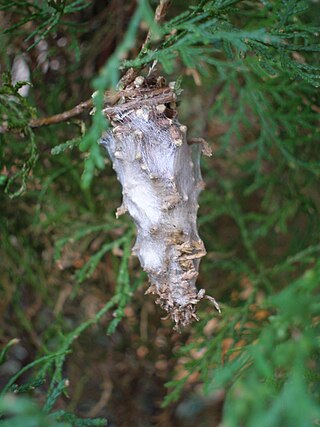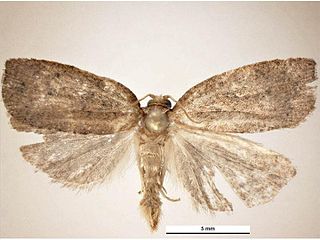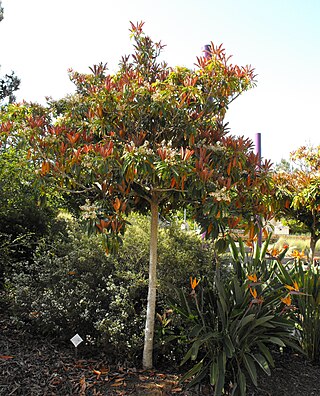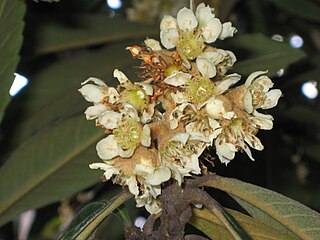
Amygdaloideae is a subfamily within the flowering plant family Rosaceae. It was formerly considered by some authors to be separate from Rosaceae, and the family names Prunaceae and Amygdalaceae have been used. Reanalysis from 2007 has shown that the previous definition of subfamily Spiraeoideae was paraphyletic. To solve this problem, a larger subfamily was defined that includes the former Amygdaloideae, Spiraeoideae, and Maloideae. This subfamily, however, is to be called Amygdaloideae rather than Spiraeoideae under the International Code of Nomenclature for algae, fungi, and plants as updated in 2011.

The loquat, called biwa in Japan, is a large evergreen shrub or tree grown commercially for its orange fruit and for its leaves, which are used to make herbal tea. It is also cultivated as an ornamental plant.

Theobroma is a genus of flowering plants in the mallow family, Malvaceae, that is sometimes classified as a member of Sterculiaceae. It contains roughly 20 species of small understory trees native to the tropical forests of Central and South America.

Putranjivaceae is a rosid family that is composed of 218 species in 2 genera of evergreen tropical trees that are found mainly in the Old World tropics, but with a few species in tropical America.

Mespilus, commonly called medlar, is a monotypic genus of flowering plants in the family Rosaceae containing the single species Mespilus germanica of southwest Asia. It is also found in some countries in the Balkans, especially in Albanian and Bulgarian regions. A second proposed species, Mespilus canescens, discovered in North America in 1990, proved to be a hybrid between M. germanica and one or more species of hawthorn, and is properly known as ×Crataemespilus canescens.

Rhaphiolepis is a genus of about fifteen species of evergreen shrubs and small trees in the family Rosaceae, native to warm temperate and subtropical East Asia and Southeast Asia, from southern Japan, southern Korea and southern China, south to Thailand and Vietnam. In searching literature it is well to remember that the name commonly is misspelt "Raphiolepsis". The genus is closely related to Eriobotrya (loquats), so closely in fact, that members of the two genera have hybridised with each other; for example the "Coppertone loquat" is a hybrid of Eriobotrya deflexa X Rhaphiolepis indica. The common name hawthorn, originally specifically applied to the related genus Crataegus, now also appears in the common names for some Rhaphiolepis species. For example, Rhaphiolepis indica often is called "Indian hawthorn", and Rhaphiolepis umbellata, "Yeddo hawthorn".

Erythroxylaceae is a family of flowering trees and shrubs consisting of 4 genera and 271 species. The four genera are AneulophusBenth., ErythroxylumP.Browne, NectaropetalumEngl., and PinacopodiumExell & Mendonça. The best-known species are the coca plants, including the species Erythroxylum coca, the source of the substance coca.

Quercus rysophylla, the loquat leaf oak, is a Mexican species of oak in the red oak section. It is native to the Sierra Madre Oriental in the States of Tamaulipas, Nuevo León, San Luis Potosí, Veracruz, and Hidalgo in northeastern Mexico.

The Orto Botanico dell'Università di Catania, also known as the Hortus Botanicus Catinensis, is a botanical garden in Catania, Sicily, southern Italy. It is operated by the University of Catania botany department. This institution is a member of BGCI, with international identification code CAT.
In botany, an obconic is an inverted cone shape. The term is most frequently applied to certain fruit or hypanthium structures with the apical end attached to the stem; however, less frequently the usage may apply to the pistil structure. In the case of fungi the designation is often made to the ascospore. The use of obconic in botany dates to at least as early as the nineteenth century; however, some modern usage applies to an entire plant form, such as the shape of a whole shrub. More broadly, in geometry or design, the term can be assigned in an abstract manner to shapes in the natural or man-made world which show an inverted cone design.

Níspero, nipero, nêspera and mespel are terms referring to certain fruit-bearing trees, or to their fruit in particular:

Oiketicus kirbyi is a moth of the family Psychidae. It is found in lowlands from Argentina to Mexico and on the Caribbean islands.

Planotortrix octo is a moth of the family Tortricidae. It is endemic to New Zealand, where it is found in both the North and South islands.

The bronze loquat is a tree native to Guangdong, Hainan, Taiwan, and South Vietnam.

Lachnostachys is a genus of flowering plants in the mint family, Lamiaceae, first described in 1842 by William Jackson Hooker. The type species is Lachnostachys ferruginea. The genus name, Lachnostachys, comes from two Greek words/roots, lachnề ("wool") and -stachys, and thus describes the genus as having spiked woolly inflorescences. The entire genus is endemic to Western Australia

Grevillea eriobotrya, commonly called the woolly cluster grevillea, is a species of flowering plant in the family Proteaceae and is endemic to a small area in the south-west of Western Australia. It is dense, erect, spreading shrub usually with linear leaves, and groups of white to creamy-white flowers.
Plants of the World Online (POWO) is an online database published by the Royal Botanic Gardens, Kew. It was launched in March 2017 with the ultimate aim being "to enable users to access information on all the world's known seed-bearing plants by 2020". The initial focus was on tropical African Floras, particularly Flora Zambesiaca, Flora of West Tropical Africa and Flora of Tropical East Africa.

Lachnostachys eriobotrya is a plant in the Lamiaceae family, native to Western Australia.

Rhaphiolepis bengalensis is a species of flowering plant in the family Rosaceae. R. bengalensis is a subtropical medium-sized tree, and is found in Asia, including in India at an elevation from 1,000 metres (3,300 ft) to 3,000 metres (9,800 ft). The species is rated least concern on the IUCN red list.




















